What are the origins of Western Australia’s iconic boab tree, whose only living relatives survive far away in Africa?

AUSTRALIA ISN’T KNOWN for its deciduous trees. Across vast swathes of forest on other continents, the annual cycle of shedding and regrowth is ubiquitous. Each year, as days shorten and temperatures drop, leaves fall. Trees shut down for winter, biding their time before embarking on a huge spring growth spurt.
But in Australia’s highly variable boom-bust climatic conditions, the evolutionary path to deciduousness was never really an option. Putting on leaves in response to seasonal change, only to have that foliage wither prematurely during tough times, is biologically wasteful. Unable to rely on predictable seasonal cycles, our trees have become opportunists, waiting out dry spells by tapping groundwater, their permanent leaf canopy always at the ready in case rain does come. The omnipresent eucalypts are a perfect example of Australia’s ascendant evergreens.
Although evergreens are ecologically triumphant here, Australia is home to a small number of native deciduous tree species. All but one are restricted to tropical or subtropical environments; the outlier is the deciduous beech of Tasmania’s cool-temperate mountains, a glorious autumnal relic of the supercontinent of Gondwana.
Australia’s other deciduous trees lose some or all of their leaves not in readiness for the winter cold, but to best survive the northern dry season. Species include the red cedar and that spectacular red-flowered endemic the Illawarra flame tree.
The red cedar is also found in Asia, and Australia serves as the regional genetic hotspot of the Illawarra flame genus, Brachychiton. But there is one remarkable Australian deciduous tree that doesn’t have a single native sibling, nor any presence elsewhere in our region. That total loner is the unmistakable boab of Western Australia’s Kimberley region.
Denne historien er fra May - June 2019-utgaven av Australian Geographic Magazine.
Start din 7-dagers gratis prøveperiode på Magzter GOLD for å få tilgang til tusenvis av utvalgte premiumhistorier og 9000+ magasiner og aviser.
Allerede abonnent ? Logg på
Denne historien er fra May - June 2019-utgaven av Australian Geographic Magazine.
Start din 7-dagers gratis prøveperiode på Magzter GOLD for å få tilgang til tusenvis av utvalgte premiumhistorier og 9000+ magasiner og aviser.
Allerede abonnent? Logg på

SULAWESI SENSATIONS
There are worlds within worlds and marvels untold waiting to be experienced on Indonesia's remote islands.
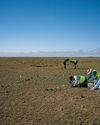
SEARCHING FOR AUSSIE DINOSAURS
Our understanding of where to find ancient life in Australia has been turned on its head by a new appreciation of the country's geology. Now the world is looking to our vast outback as the latest hotspot to locate fossils.
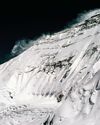
THE HARDEST NIGHT
The first Australian ascent of Mt Everest in 1984 is one of the great feats of mountaineering. Climbed by a small team semi-alpine style, with no bottled oxygen, via the Great (Norton) Couloir, it remains unrepeated 40 years later.
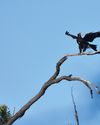
WEDGE-TAILED WONDER
The chance discovery of an eagle nest leads to an extended vigil observing normally hidden behaviours of one of nature's supreme winged marvels.
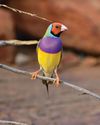
BURDENED BY BEAUTY
Northern Australia's Gouldian finch survives in huge numbers in cages around the world, but its wild population continues to struggle.
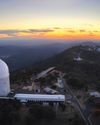
A TELESCOPE FOR A GOLDEN AGE
After a stellar 50 years as one of the country's major scientific assets, the AAT continues to play a major role in keeping Australian astronomy on the world stage.
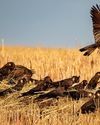
COCKY WHISPERING AT COOMALLO CREEK
This patch of remnant bush on the edge of the West Australian wheatbelt is a place loved by one of Australia's rarest bird species and the man who has studied the site for more than 50 years.

A PIONEERING PAIR
Louisa Atkinson and her mother, Charlotte, were among Australia's earliest authors, and pioneers in women's rights.

THE LONGEST WALK
Lucy Barnard is walking from Argentina to Alaska -the length of the Americas - on an extraordinary journey of endurance and adventure.
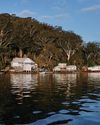
SECLUDED, BUT NOT ALONE
In an era of heightened social isolation, where many of us lead lonely lives, Dangar Island offers the chance to be part of a supportive, connected community.